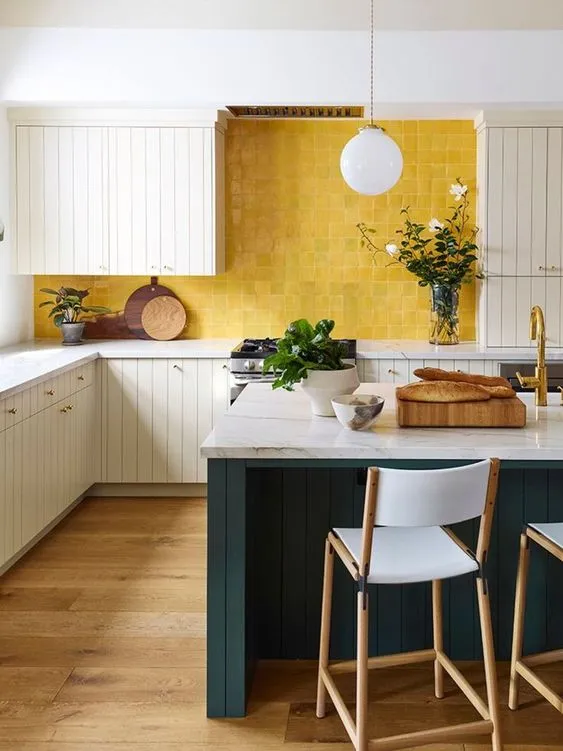Yellow Green Kitchen Decor: Top 7 Ideas
Transforming your kitchen into a vibrant and inviting space can be achieved with the refreshing combination of yellow and green. This color pairing evokes feelings of happiness, energy, and connection to nature, making it ideal for the heart of your home. From subtle accents to bold statements, there are numerous ways to incorporate this dynamic duo into your kitchen decor. This guide will explore seven inspiring ideas to help you create a kitchen that is both stylish and functional, bringing a touch of sunshine and serenity to your everyday life. Get ready to revitalize your space with these top decorating tips!
Embracing the Yellow Green Color Scheme
The beauty of a yellow and green kitchen lies in its versatility. This color scheme can be adapted to suit various design styles, from modern and minimalist to rustic and farmhouse. The key is understanding how to balance the colors and select the right shades to create the desired atmosphere. Whether you opt for a zesty lemon yellow paired with a calming sage green or a more dramatic combination of chartreuse and emerald, the possibilities are endless. Consider the natural light in your kitchen, the existing elements, and your personal preferences when choosing your palette.
Understanding Color Psychology in the Kitchen
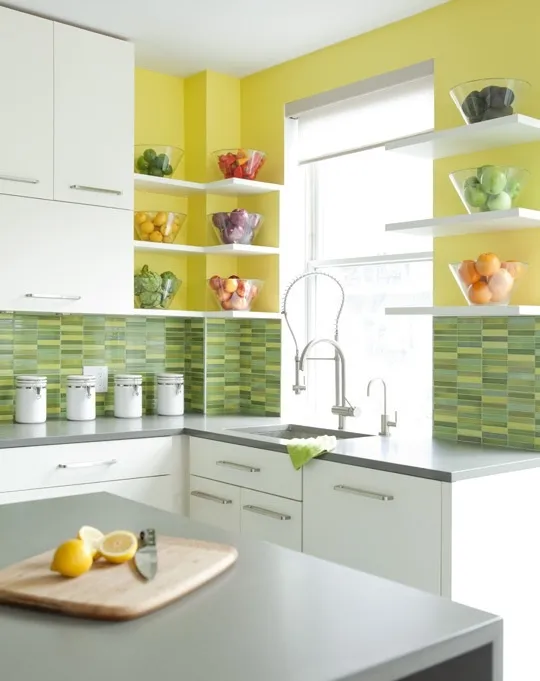
Colors have a profound impact on our emotions and behavior, and this is especially true in the kitchen, where we spend a significant amount of time. Yellow is often associated with happiness, optimism, and energy, making it a great choice for a space where you prepare food and socialize. Green, on the other hand, represents nature, growth, and harmony, creating a sense of calm and balance. Combining these two colors can stimulate appetite and promote a sense of well-being, making your kitchen a more enjoyable place to be. Consider how the chosen hues will impact the overall mood of the space, and select shades that complement your lifestyle.
The Best Shades of Yellow and Green
The success of your yellow and green kitchen largely depends on the shades you select. For yellow, consider options like pale butter, sunny lemon, or goldenrod for a warm and inviting feel. If you prefer a cooler approach, opt for shades like chartreuse or a soft lime green. When it comes to green, explore options like sage, olive, mint, or emerald, depending on the ambiance you want to achieve. Remember to sample paint colors in your kitchen to observe how they look at different times of the day and with your existing lighting. This will help you choose the perfect shades to create your ideal space.
Idea 1 Pairing Yellow and Green with White
One of the most effective ways to integrate yellow and green into your kitchen decor is to pair them with white. White acts as a neutral backdrop that allows the colors to pop while creating a clean and airy feel. This combination is perfect for smaller kitchens as it can make the space appear larger and brighter. You can incorporate white through the walls, countertops, or appliances, using yellow and green as accents through accessories, textiles, or cabinetry. This simple yet elegant approach offers a refreshing and inviting atmosphere.
Benefits of a White Background
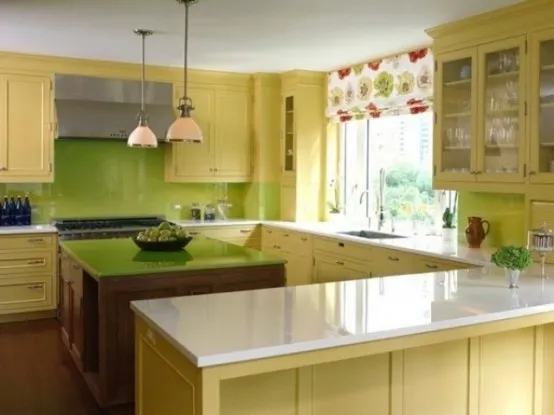
A white background offers numerous advantages in a kitchen setting. It reflects natural light, making the space feel brighter and more open. It also serves as a versatile base, allowing you to experiment with different color combinations and decor styles. White can make a kitchen feel cleaner and more organized, creating a sense of calm and order. This allows the yellow and green elements to become focal points, adding personality and visual interest to the space. Furthermore, white walls are a timeless choice that will remain stylish for years to come.
How to Incorporate White
There are many ways to incorporate white into your yellow and green kitchen decor. Start with white walls and consider white cabinetry or countertops. Introduce white appliances, such as a refrigerator or oven, to maintain a cohesive look. Add white backsplashes, perhaps with subtle yellow or green accents. You can also use white accessories, such as dishware, towels, or decorative objects, to create a balanced and harmonious design. Remember, different shades of white can complement different shades of yellow and green, so explore your options to find the perfect fit.
Idea 2 Using Yellow Green on Kitchen Cabinets
Painting your kitchen cabinets is a bold way to make a statement with yellow and green. This can completely transform the look and feel of your kitchen. Consider using a soft, muted yellow or a calming sage green for a sophisticated look, or go for a vibrant lime green for a more energetic vibe. This approach works particularly well if you have neutral walls and countertops, allowing the cabinets to become the focal point. Be sure to consider the overall style of your kitchen and the existing elements before making your decision, and select a paint finish that suits your needs and preferences.
Choosing the Right Paint Finish
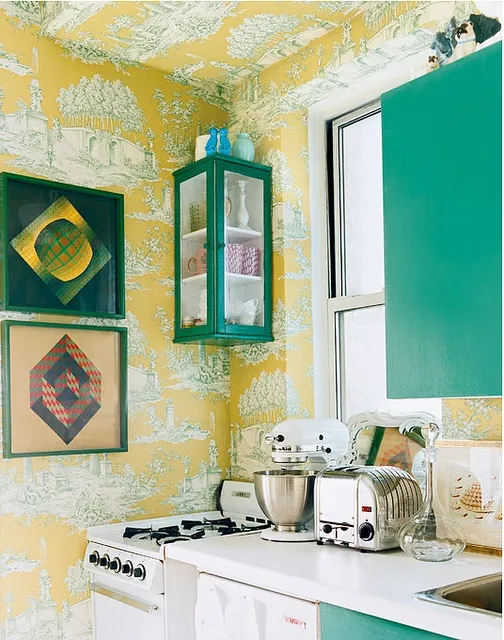
The paint finish you choose can significantly impact the look and durability of your cabinets. For kitchen cabinets, it is recommended to use a paint with a satin or semi-gloss finish. These finishes are more resistant to moisture, grease, and wear and tear, making them ideal for high-traffic areas like the kitchen. They are also easier to clean and maintain. Flat or matte finishes can also be used, especially on upper cabinets, but they tend to be less durable and more prone to stains. Ensure you prime your cabinets properly before painting, as this will help the paint adhere better and create a smoother finish.
Tips for Painting Kitchen Cabinets
Painting kitchen cabinets can be a rewarding DIY project, but it requires careful preparation and execution. Start by removing all cabinet doors and hardware. Thoroughly clean the surfaces to remove grease and grime. Sand the cabinets lightly to create a smooth surface for the paint to adhere to. Apply a high-quality primer designed for cabinetry. Then, apply two or three coats of your chosen paint, allowing each coat to dry completely before applying the next. Finally, reassemble the cabinets and install the hardware. Taking your time and following these steps will ensure a professional-looking result.
Idea 3 Adding Yellow Green Accessories
If you are not ready to commit to a major color overhaul, accessories are a great way to introduce yellow and green into your kitchen. This can be a simple and cost-effective way to refresh your space and add personality. Incorporate yellow and green through items like dishware, kitchen towels, small appliances, decorative bowls, and artwork. These accessories can be easily swapped out or updated as your tastes evolve, making this approach a flexible and adaptable solution. Using accessories also allows you to experiment with different shades and patterns before committing to larger changes.
Types of Accessories to Consider
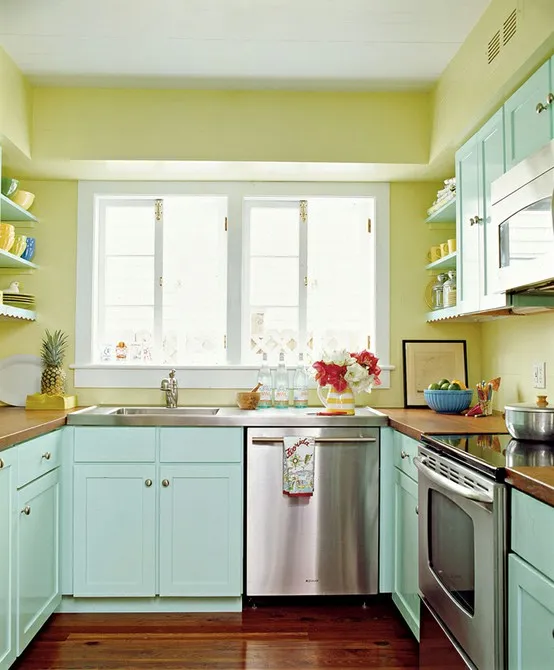
The possibilities for accessories in a yellow and green kitchen are vast. Consider yellow or green dishware, such as plates, bowls, and mugs, to add a pop of color to your kitchen. Use kitchen towels and pot holders in these colors to brighten up your workspace. Place a yellow or green fruit bowl on your countertop. Add small appliances, such as a mixer or a toaster, in these colors. Hang artwork featuring yellow and green imagery, such as landscapes or abstract designs. Select decorative items like vases, canisters, or utensil holders in these shades. Even your kitchen utensils can be yellow or green!
How to Choose the Right Accessories
When choosing accessories, consider the overall style of your kitchen and the existing color scheme. Opt for accessories that complement the other elements in your kitchen rather than clashing with them. Mix and match different shades of yellow and green to create visual interest, but be careful not to overwhelm the space. Look for patterns and textures to add depth and dimension. Choose high-quality accessories that are both stylish and functional. Ultimately, your accessories should reflect your personality and enhance the overall look and feel of your kitchen.
Idea 4 Yellow Green Backsplash Designs
A backsplash is a fantastic opportunity to incorporate yellow and green into your kitchen. Backsplashes are visually prominent and protect your walls from splashes and spills. They also add personality and style to your kitchen. There are many backsplash options available, from tiles to glass to painted surfaces. Choose the material and design that best suits your taste and budget, and enjoy transforming your kitchen into a stylish and functional space.
Popular Backsplash Materials
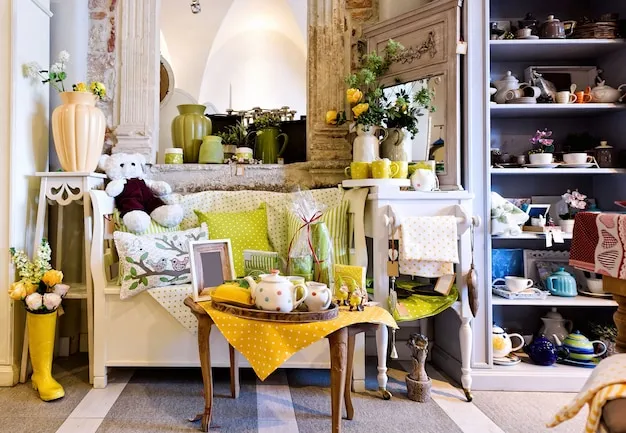
Various materials are available for backsplashes, each with its own unique characteristics and aesthetic appeal. Ceramic and porcelain tiles are popular choices due to their durability, affordability, and versatility in design. Glass tiles can add a touch of elegance and reflect light, making your kitchen feel brighter. Natural stone, like granite or marble, offers a luxurious and timeless look. If you’re on a budget, consider peel-and-stick tiles or paintable surfaces. Each material offers different textures, colors, and patterns to create a unique and stylish backsplash.
Backsplash Design Ideas
When designing your yellow and green backsplash, consider various patterns and styles. Use subway tiles in shades of green or yellow for a classic look. Create a mosaic pattern using a combination of yellow and green tiles. Opt for a geometric design to add a modern touch. Paint a custom design onto your backsplash, adding a personalized touch. Regardless of the design, ensure that the backsplash complements the overall kitchen decor and ties the different elements of your kitchen together. Your backsplash should be as beautiful as it is functional.
Idea 5 Integrating Yellow Green Textiles
Textiles are another effective way to infuse yellow and green into your kitchen. From curtains and tablecloths to chair cushions and kitchen towels, textiles can add softness, warmth, and visual interest to your space. The key is to select fabrics with the right patterns, textures, and colors. You can easily update your kitchen’s look by changing your textiles with the seasons or your changing design tastes.
Choosing the Right Fabrics
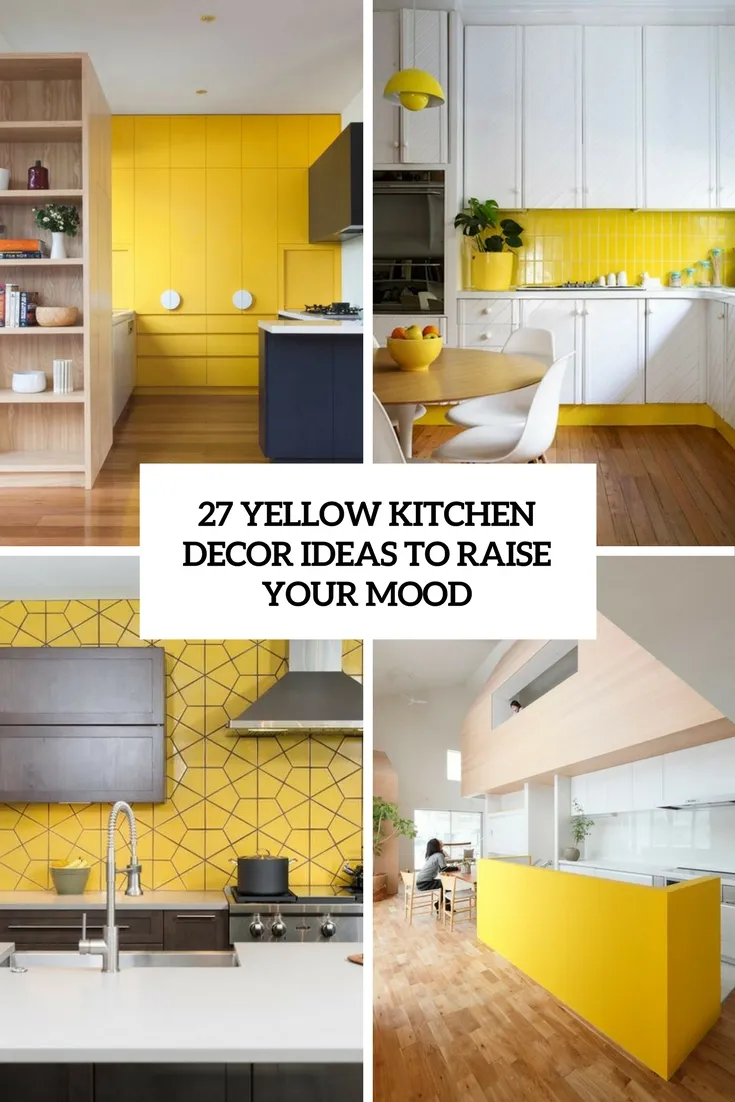
Consider the functionality, durability, and aesthetic of your textiles when choosing fabrics for your kitchen. Choose easy-to-clean and stain-resistant fabrics for kitchen towels and tablecloths. Select durable and comfortable fabrics for chair cushions and curtains. Look for fabrics with the right patterns and textures that complement your overall design scheme. Consider using solid colors, stripes, floral prints, or geometric patterns, depending on your desired look. Linen, cotton, and other natural fibers can add a touch of elegance and sophistication to your kitchen.
Textile Placement and Design
The placement of your textiles plays a significant role in enhancing your kitchen’s decor. Use curtains or blinds in yellow or green to add color and privacy to your windows. Place a tablecloth in your chosen colors on your dining table to create a focal point. Use chair cushions in yellow or green to add comfort and style to your chairs. Hang kitchen towels in these colors to bring pops of color into your kitchen. Use rugs and runners with yellow and green accents to define space and add warmth. With careful placement, textiles can become an essential element of your kitchen decor.
Idea 6 Incorporating Plants for a Fresh Look
Plants are a fantastic way to bring life and freshness into any kitchen. The natural green of plants creates a beautiful contrast with yellow, adding a touch of nature’s beauty to your decor. Incorporate plants into your kitchen by placing them on countertops, shelves, or windowsills. This simple addition can significantly improve the overall look and feel of your kitchen, making it a more inviting and enjoyable space.
Best Plants for Kitchens
When selecting plants for your kitchen, opt for varieties that thrive in a kitchen environment. Herbs, such as basil, mint, and rosemary, are not only decorative but also functional, as you can use them in your cooking. Low-light tolerant plants, such as snake plants or ZZ plants, can also thrive in kitchens with limited natural light. Other options include pothos, spider plants, and peace lilies. Choose plants that are easy to maintain and that fit the overall aesthetic of your kitchen. Remember to consider the amount of sunlight your kitchen receives and choose plants accordingly.
Plant Placement and Maintenance
Strategically place plants throughout your kitchen to create a balanced and visually appealing design. Place small plants on countertops or shelves to add a touch of greenery. Hang plants from the ceiling or place them on windowsills to add height and dimension. Group plants together to create a focal point or scatter them throughout the kitchen to create a sense of harmony. Ensure that your plants receive proper care and maintenance. Water them regularly, provide adequate sunlight, and fertilize them as needed. Properly maintained plants will thrive and enhance your kitchen’s decor.
Idea 7 Balancing Yellow Green with Other Colors
While yellow and green create a stunning combination, it’s essential to balance them with other colors to create a cohesive and harmonious design. Consider your kitchen’s existing elements, such as flooring, countertops, and appliances, when choosing additional colors. A well-balanced color palette will ensure that your kitchen looks stylish, inviting, and reflects your personality. The addition of other colors provides depth and dimension to your design scheme.
Complementary Colors for Yellow Green
Several colors complement yellow and green beautifully. White and neutral tones like beige or gray can serve as a base, allowing yellow and green to stand out. Blue is a classic complementary color, as it provides a refreshing contrast. Consider shades of blue, such as navy, teal, or sky blue. Incorporate other colors like wood tones, black, or metallic accents to add warmth and visual interest. Don’t be afraid to experiment with different color combinations until you find a palette that suits your style.
Creating a Balanced Color Palette
When creating a balanced color palette, consider the 60-30-10 rule. Use one color for 60% of the space, another for 30%, and a third for 10%. This will create a harmonious and visually appealing design. In a yellow and green kitchen, you might use white or a light neutral for 60% of the space, green for 30% (perhaps through cabinets or accessories), and yellow for 10% (through accents like dishware or a backsplash). Experiment with the proportions to find the perfect balance for your space. Remember, a well-balanced color palette will result in a stylish and inviting kitchen you’ll love.
